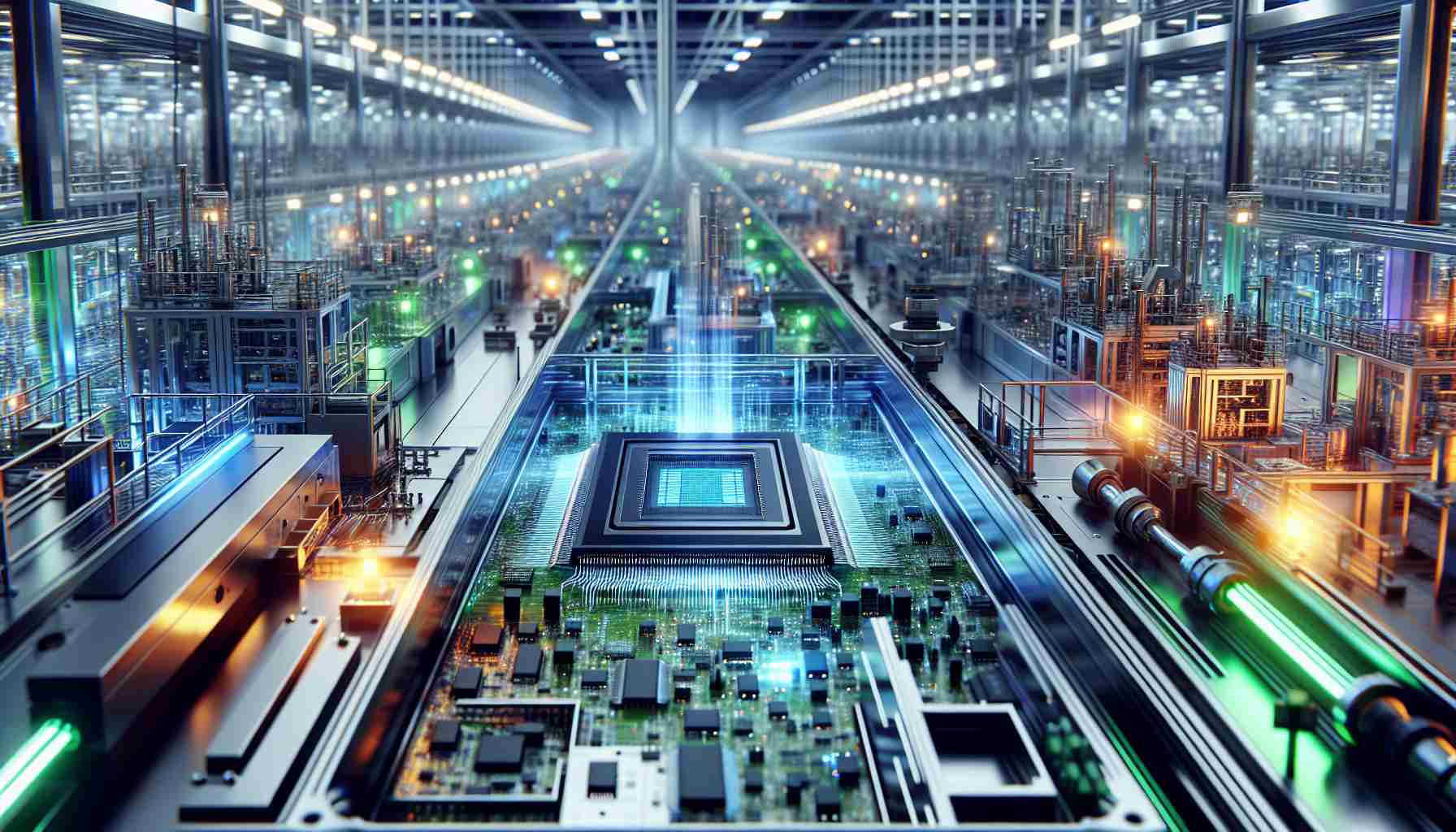Japan Gears Up for Cutting-Edge 2nm Semiconductor Manufacturing
Japan is set on revitalizing its position in the global semiconductor landscape with the upcoming production of advanced 2nm chips. The Rapidus corporation, established in August 2022, has outlined plans to commence production of these next-generation chips in the early part of 2027. A cutting-edge manufacturing facility is currently taking shape in Hokkaido, supported by a substantial fiscal stimulus from the Japanese government totaling $6.1 billion and substantial investments from prominent entities such as SoftBank, Sony, and Toyota. This significant undertaking also enjoys a technological partnership with tech giant IBM.
Henri Richard, President and GM of Rapidas Design Solutions, has confirmed that the production timeline is on course, anticipating a considerable demand for 2nm chip production. He stresses the necessity for increased production capacity amidst the backdrop of heightened geopolitical tensions and national security concerns, particularly in the tech sector.
Japan Revives Domestic Semiconductor Manufacturing
Japan’s initiative echoes recent moves by the U.S. to boost domestic chip production, as demonstrated by President Biden’s CHIPS and Science Act. After 25 years, Japan will witness the operationalization of a semiconductor fabrication plant on its soil, championed by both government leaders and private investors.
Strengthening Semiconductor Alliances
According to Henri Richard, Rapidus’ entry into the semiconductor arena provides a new and viable alternative to the current market leaders like TSMC, Samsung, and Intel. The company aims to be at the forefront of semiconductor production, offering competition while promoting a balance in geopolitical risks.
Collaborations to Foster Innovation
There is a rising interest among various tech companies, including AI startups and those focusing on edge computing, to partner with Rapidus for their chip production needs. Recent speculation points to Rapidus collaborating with Canadian company Tenstorrent for advanced AI chips employing RISC-V architecture, a move signaling Rapidus’ readiness to deliver best-in-class cycle time reduction services.
Eco-Friendly and Technologically Advanced Fabrication
In an age where environmental sustainability is paramount, Rapidus’ facility near Chitose Airport in Hokkaido is lauded for its eco-friendly design, utilising renewable energy sources and incorporating green infrastructure. Furthermore, their association with IBM on developing cutting-edge nanosheet technology points to a competitive edge in performance and energy efficiency compared to current standards.
Rapidus stands as a beacon of Japan’s return to semiconductor prominence, showcasing a powerful blend of innovation, sustainability, and strategic partnerships.
Japan’s foray into advanced 2nm semiconductor manufacturing aims to recapture its historical leadership in the semiconductor industry and meet the growing global demand for high-performance, low-power integrated circuits.
Key Questions and Challenges:
One important question is how Japan will secure the necessary talent and expertise to drive innovation and production in such a highly specialized and competitive field. Successfully training or attracting skilled professionals is crucial for the 2nm chip production initiative to succeed.
Another challenge is maintaining technological leadership in semiconductor manufacturing, as technological advancements are rapid and competitors are aggressively investing in R&D. The 2nm technology will soon face competition from companies working on 1nm or even more advanced processes.
Additionally, the rise of geopolitical tensions and trade disputes pose a risk for global supply chains, so Japan’s move can be seen as an effort to mitigate these risks by ensuring a domestic source of critical technology.
Advantages:
Producing 2nm chips in Japan has several advantages. It can reduce reliance on foreign chip producers, enhance national security, and provide an economic boost through the creation of high-tech jobs. It can also stimulate other sectors of the economy that depend on semiconductor technology, such as automotive and electronics.
There are environmental advantages to the eco-friendly facility design that can set new industry standards for green manufacturing practices. The partnership with IBM for nanosheet technology development marks another edge in performance and power efficiency, ensuring competitiveness in next-generation chip technology.
Disadvantages:
One disadvantage includes the significant cost and risk associated with building and operating cutting-edge semiconductor fabs, which requires substantial investment and time before yielding returns.
Another concern is the global market’s volatility and the rapid pace of innovation, which could render current technology obsolete quickly. Hence, it is a challenge to recover investments and to continue innovating to stay relevant.
For related information on this topic, you can visit the following official websites:
– IBM
– SoftBank
– Sony
– Toyota
Rapidus’ ambitious project represents Japan’s strategic move to reclaim a leadership role in technology, safeguard against geopolitical and supply chain instabilities, and stimulate economic growth while adhering to environmental sustainability principles.
